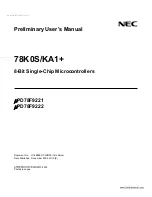
EVCO S.p.A.
EV3 MVC & EVD MVC
| Application manual ver. 2.2c | Code 1443DMVCI224
page 55 of 74
On the basis of the parameter C58 (capacity coefficient) value the regulation will be by pressure (C58 = 0) or capacity (C58 > 0). In
the first situation the value detected by the differential pressure probe will be the setpoint value (C56), while in the second situation it
is the value of the capacity calculated using the formula:
ܳ = ݇√∆ܲ
In the incremental neutral zone, regulation is based on the values of the parameters C56 (setpoint) and C57 (neutral zone) with an
increase of the C12 speed when the pressure/capacity value falls below C56 - C57/2, and a reduction of the C12 speed when the
pressure/capacity value rises above C56 + C57/2. In this situation too, the action may be repeated if the condition remains above C13.
10.9
CO
2
regulation
The controller is able to keep the CO
2
value in the room under control to guarantee maximum comfort. Regulation acts first on the
mixing chamber damper (if present) and then on the fan speed if the
CO
2
probe
is configured and not in alarm mode.
CO
2
control uses incremental neutral zone regulation with parameters C50, C51, C12 and C13. If the CO
2
concentration is too high
(above the C50 setpoint plus half the neutral zone C51) the mixing chamber damper is gradually opened wider starting from the normal
open position (defined by its setpoint and the active time band) up to its maximum aperture (C07). If the situation does not return to
normal when the damper is open to its maximum degree (or if the damper is not present) the fan speed gradually increases, starting
from normal speed (as defined by the setpoint and the active time band) until it reaches maximum speed (C05). When the
concentration of CO
2
falls below the setpoint less half the band, the reverse is carried out: the fan speed gradually reduces down to
normal speed, then the damper returns to its normal aperture.
N.B.: if both a differential pressure sensor and a CO
2
probe are configured, the damper regulates in accordance with the
CO
2
while the fans adjust in accordance with the differential pressure/capacity.
10.10
Humidity regulation
The controller is able to control the room humidity to guarantee maximum comfort both when the humidity needs to be reduced
(dehumidifying) and when it needs to be increased (humidifying). The dehumidifying processes in the summer and winter cycles are
different.
10.10.1
Winter dehumidification
For environments that are also humid in winter (swimming pools for example) it is possible to use the extremely low humidity of the
external air to reduce the internal humidity. In this situation regulation takes place by acting on the mixing chamber damper and on the
fan speed if the dehumidifier is enabled in heating mode (C45) and the
Humidity probe
is configured and not in alarm mode or the
Dehumidifier request
digital input is configured and active.
The humidity is regulated in the incremental neutral zone by parameters C46, C47, C12 and C13. If the humidity is too high
(>C46+C47/2) the mixing chamber damper is gradually opened wider, starting from normal then up to maximum aperture. If the
situation does not return to normal when the damper is open to its maximum degree, the fan speed gradually increases, starting from
normal speed until it reaches maximum speed. When humidity falls below the setpoint less half the band (C46-C47/2), the reverse is
carried out: the fan speed gradually reduces down to normal speed, then the damper returns to its normal aperture.
10.10.2
Summer dehumidification
In the summer cycle the external air cannot cause an effective reduction in the room humidity, making it necessary to use a cold coil
possibly with post-heating of the air.
Regulation acts on the cooling resources if the dehumidifier is enabled in cooling mode (C45) and the
Humidity probe
is configured and
not in alarm mode or the
Dehumidifier request
digital input is configured and active.
If required, the summer dehumidifier is activated when the humidity is greater than C46+C47/2 or the dehumidifier request digital
input is active. The process stops when the humidity falls below C46-C47/2 or the digital input is deactivated.
The humidity is regulated in the incremental neutral zone by parameters C46, C47, C39 and C40 that activate the cooling resources
according to the heat regulation timings and methods.
Following dehumidification the room temperature is liable to fall below the active regulation setpoint (which is the cooling setpoint for
the time band in progress, possibly in follow-on if the return/room probe and the supply probe are present). If this happens and the
second coil is present the post-heating function is activated with regulation in the incremental neutral zone. In this case, the hot coil
power is increased (in accordance with parameters C39/C40) when the temperature falls by C37/2 (regulation band in heating mode)
below the setpoint; the coil power is decreased if the temperature rises above the setpoint (without waiting for it to rise by C37/2
above that value).
















































